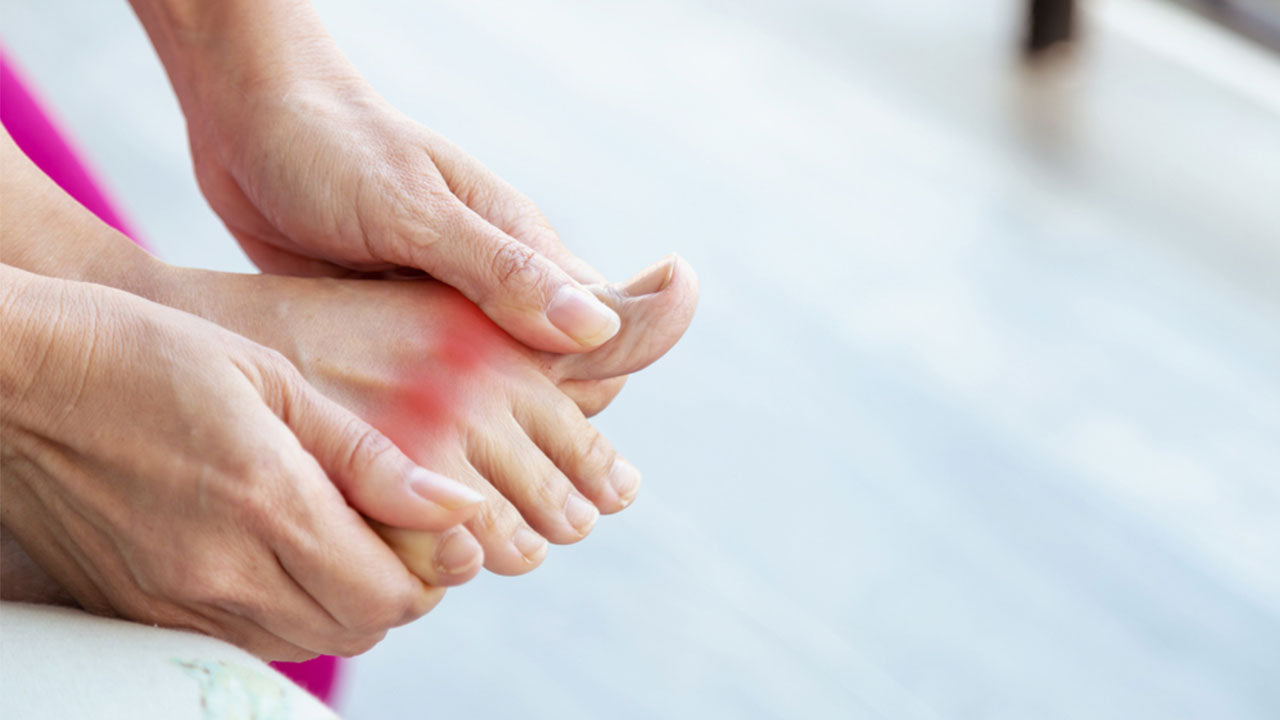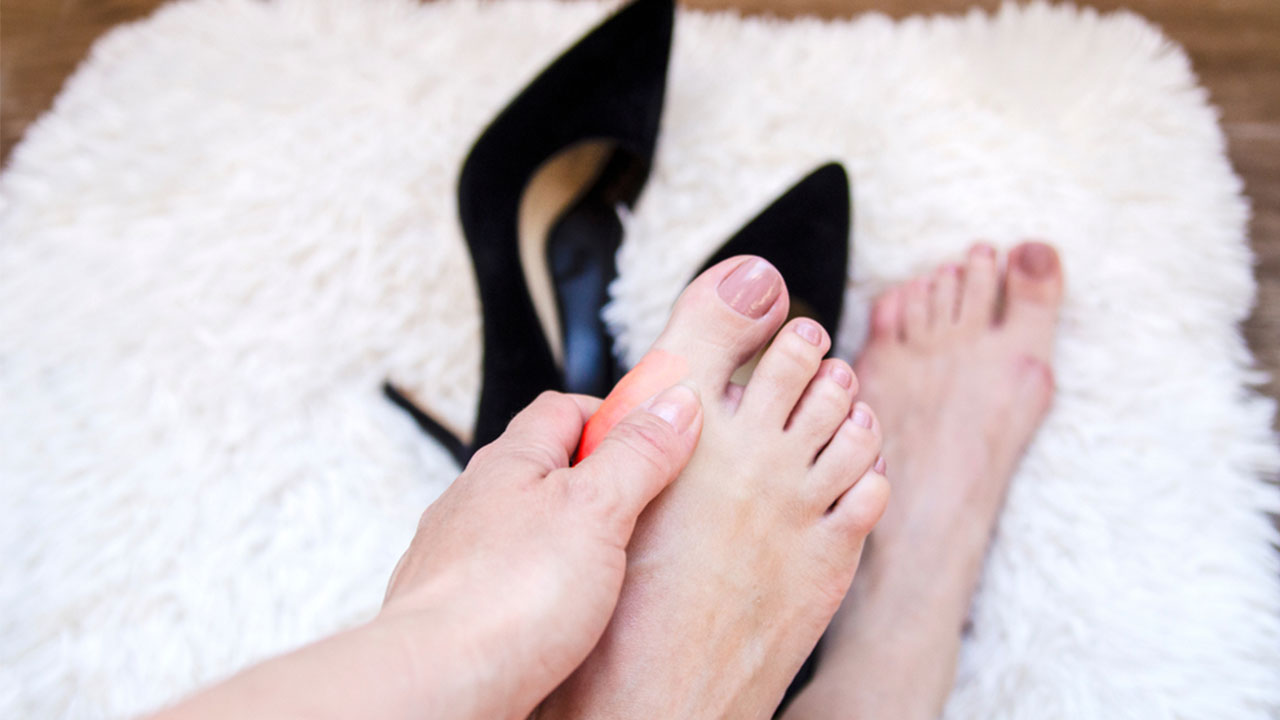6 Natural Ways to Treat and Prevent Gout
 By: by Amino Science
By: by Amino Science

According to a study from 2011, the number of Americans with gout has been rising steadily over the past several decades, most likely because of increasing rates of obesity and high blood pressure. At the time the study was published, it was estimated that the number of people in the United States with gout had risen to 8.3 million. Similar figures are being seen in the United Kingdom as well, with rates of gout increasing by about 4% a year. With numbers like these, more and more people need to be aware of this particularly painful form of arthritis as well as the methods available to treat and prevent gout.
What Causes Gout?
Gout is a type of arthritis that’s been around at least as long as the ancient Egyptians, who first described it in 2640 BCE. Historically, it’s been called both the “disease of kings” and the “rich man’s disease” because of its association with rich foods and alcohol consumption.
The condition is caused by the accumulation of urate crystals in the joints—especially the big toe. These crystals form when too much uric acid is present in the blood. While uric acid is a natural byproduct of the body’s breakdown of purines—substances that are naturally present in all body tissues—certain foods also contain purines.
And when too many of these foods are consumed, the body’s systems can be overwhelmed, with the resultant buildup of uric acid and eventual formation of sharp, needlelike urate crystals in a joint or its surrounding tissues.
The key word here is "eventual" because, interestingly enough, the high uric acid levels that lead to gout are typically elevated for 20 to 30 years before symptoms arise. This is why gout usually occurs in people who are middle-aged and older.
Symptoms of Gout
A gout attack can—and usually does—strike suddenly, often waking a person up in the middle of the night with the sensation that the affected joint is on fire. In fact, the joint can be so hot, swollen, and tender that even something as light as a bedsheet may be more than an individual can stand.
Whether a gout attack affects the feet, ankles, knees, elbows, wrists, or hands (though almost half of all cases occur in the big toe), the inflammation can be so intense that it leads to fever, muscle aches, and other flu-like symptoms. And after the initial joint pain subsides—usually within 4 to 12 hours—discomfort can continue for a few days to weeks.
In people whose gout is left untreated, chronic swelling and permanent joint damage can occur. Moreover, urate crystals may continue to build up until they form grotesque deposits known as tophi or even kidney stones.
Gout Risk Factors
Because the risk of gout is tied to increased levels of uric acid in the body, you’re more likely to develop the condition if you have certain qualities that increase these levels. These include:
- Family history: People with family members with gout are more likely to develop the condition.
- Sex and age: Men naturally have higher levels of uric acid and so are more likely to develop gout than women. However, after menopause, women’s levels approach those of men, and their rates of gout subsequently rise.
- Weight: People who are overweight or obese produce higher levels of uric acid, which increases the risk of gout.
- Diet: Drinking alcohol (especially beer) and eating a diet rich in red meat, seafood, organ meats, and fructose—including the high fructose corn syrup found in sugary drinks and various and sundry processed foods—increase levels of uric acid in the body.
- Health problems: Certain medical conditions, including high blood pressure, kidney disease, diabetes, and heart disease, are linked to an increased risk of gout.
- Medications: The use of thiazide diuretics, aspirin, and immunosuppressants (in people who’ve undergone organ transplants) can increase the risk of developing gout.
Diagnosing Gout
While an acute gout flare in the big toe is a hallmark of the disease and easy to diagnose, diagnosis can be a bit tricky when other joints are involved. Therefore, your health care provider may use a series of tests to determine whether it’s really gout or another condition that mimics the disease, such as rheumatoid arthritis or pseudogout, which is caused by calcium pyrophosphate crystals. These tests include:
- Blood test: A blood test to check levels of uric acid may be performed, though some people with elevated levels never experience gout, while others have symptoms of gout but normal levels. Therefore, additional tests may be performed to confirm the diagnosis.
- Synovial fluid test: This test is performed with the use of a needle to withdraw fluid from the affected joint. The joint fluid is then checked for urate crystals under a microscope.
- X-ray: Imaging of the affected joint can be helpful in determining whether something else is causing inflammation of the joint.
- Ultrasound: This test detects the presence of urate crystals within a joint with the use of sound waves.
Conventional Treatment of Gout
If you’re confirmed to have gout, you may be recommended medications to both treat the acute attack and help prevent gout flare-ups. These medications include:
- Nonsteroidal anti-inflammatory drugs (NSAIDs): NSAIDs such as ibuprofen or indomethacin may be used at high doses during acute attacks and at low doses for prevention of future flares.
- Colchicine: Like NSAIDs, colchicine is used to both treat gout and prevent future flare-ups.
- Steroids: These medications are generally only used in people who can’t take either NSAIDs or colchicine.
- Xanthine oxidase inhibitors (XOIs): This class of drugs, which includes allopurinol, helps block the production of uric acid.
- Uricosurics: These drugs include probenecid and may be used to help improve the kidneys’ ability to remove uric acid from the body.
Natural Remedies to Treat and Prevent Gout
For those who find the side effects of traditional medications prohibitive or simply wish to go a more natural route, there are actually several methods that have been shown to aid in the treatment and prevention of gout. Six remedies that have demonstrated particular promise are:
- Cherries and cherry extract
- Gout diet
- Exercise
- Limited alcohol
- Coffee
- Vitamin C
1. Cherries and Cherry Extract
A 2012 study published in the journal Arthritis & Rheumatology showed that consumption of both cherries and cherry extract reduced the risk of gout attacks by about 35%. These findings were corroborated by a 2014 study that demonstrated that Montmorency tart cherry concentrate reduced blood levels of uric acid and the inflammatory marker C-reactive protein.
2. Gout Diet
A gout diet focuses on helping people achieve a healthy weight by teaching good dietary habits, including which purine-rich foods to avoid and which foods can help control uric acid levels. The diet emphasizes the consumption of whole grains, fruits, and vegetables and the avoidance or limitation of processed foods, high fructose corn syrup, and fruit juices.
It also encourages weight loss by restricting calories and puts limits on the consumption of red meat, organ meats, fatty poultry, some types of seafood, and high-fat dairy products. Instead, a gout diet focuses on lean meats and poultry, low-fat dairy products, and lentils as protein sources. Interestingly, vegetables high in purines, such as asparagus and spinach, are an acceptable part of a gout diet, as studies have shown they don’t increase the risk of gout attacks.
In addition, the diet recommends the ingestion of plenty of water, as increased water intake is linked to lower blood levels of uric acid.
3. Exercise
Exercise helps address two risk factors for gout: excess weight and obesity. In those who aren’t currently overweight or obese, regular exercise can also help maintain a healthy weight, thereby reducing the risk of gout. However, be careful about losing weight too quickly, as both rapid weight loss and fasting can lead to excess lactic acid, which hinders the ability of the kidneys to process uric acid and can trigger a gout attack.
4. Limited Alcohol
Consumption of beer and liquor is associated with an increased risk of gout and gout flares. However, there’s some disagreement when it comes to wine, with some studies indicating moderate consumption doesn’t appear to increase risk and others indicating it does. So the best advice may be to avoid all forms of alcohol during attacks of gout and to limit alcohol intake (especially beer) between attacks.
5. Coffee
Studies have shown that coffee consumption is associated with lower uric acid levels. In fact, one study found that men who drank 4 to 5 cups per day lowered their risk of gout by 40%, and those who drank 6 or more cups lowered theirs by a whopping 59%.
6. Vitamin C
Several studies have indicated that increased vitamin C intake is associated with reduced uric acid levels. One study from 2009 found that the risk of gout fell by 17% for every 500-milligram increase in vitamin C intake, with a drop in risk of 45% with doses of 1,500 milligrams or more.
How Amino Acids Can Help
Animal meats are high in purines that exacerbate gout. But they are also high in essential amino acids vital to health. While reducing your intake of high-protein animal products may help heal gout, it also reduces your access to amino acids.
That's where supplementation with essential amino acids comes in handy. A supplement made of free amino acids gives your body the protein it needs while reducing urea and ammonia concentrations that can contribute to gout.
If you or someone you love is dealing with gout, speak with your health care provider about your options and what treatments might be right for you. Whether you decide to try dietary and lifestyle changes alone or combine them with medication, early treatment of gout can help prevent serious complications down the road.


Up to 25% off Amino
Shop NowTAGS: conditions natural cures
Join the Community
Comments (0)
Most Craveable Recipes




 833-264-6620
833-264-6620



















